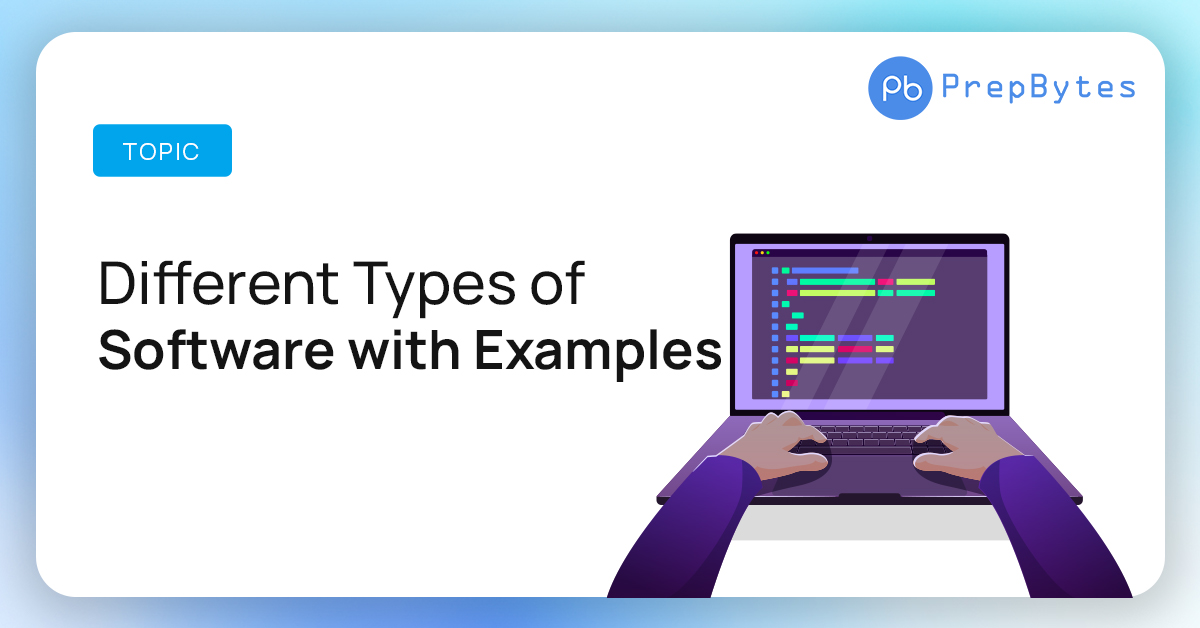Software plays a pivotal role in modern technology, enabling computers and devices to perform an array of functions. From operating systems to applications, different types of software cater to diverse needs. This article delves into various software categories, offering examples and highlighting their significance.
What is Software?
The software encompasses instructions, data, or programs essential for computer operation and task execution. Unlike hardware, which pertains to a computer’s tangible components, software encompasses applications, scripts, and programs that function on a device. It serves as a comprehensive term encompassing the dynamic aspects of a computer, in contrast to the fixed nature of hardware.
Software can be broadly classified into two primary categories: application software and system software. Application software is developed to meet specific needs and perform designated tasks. Conversely, system software is crafted to manage a computer’s hardware components and establish a foundation upon which applications can operate.
Types of Software with Example:
Below are the types of software with examples:
1. Operating System Software:
- An operating system (OS) manages hardware resources and provides a user interface. It’s the foundation on which other software runs.
- Examples: Microsoft Windows, macOS, Linux, Android, iOS.
- Application: Windows provides a user-friendly interface for tasks, while Linux is favored for server applications due to its stability and customizability.
2. Application Software:
- Application software serves specific purposes for end-users, such as productivity, entertainment, communication, and more.
- Examples: Microsoft Office Suite (Word, Excel, PowerPoint), Adobe Photoshop, Spotify, Zoom.
- Application: Microsoft Office Suite aids in document creation and management, while Spotify offers music streaming.
3. Utility Software:
- Utility software enhances the computer’s performance, security, and management by performing maintenance tasks.
- Examples: Antivirus software (Norton, McAfee), Disk Cleanup, Backup Software.
- Application: Antivirus software protects systems from malware, while backup software ensures data preservation.
4. Programming Software:
- Programming software assists developers in creating, debugging, and managing code.
- Examples: Integrated Development Environments (IDEs) like Visual Studio, and Eclipse.
- Application: IDEs provide a comprehensive environment for writing, testing, and debugging code.
5. System Software:
- System software bridges the gap between hardware and applications, facilitating communication and operation.
- Examples: Device drivers, Firmware.
- Application: Device drivers enable hardware components to communicate with the OS, ensuring proper functionality.
6. Embedded Software:
- Embedded software is designed for specific hardware and often performs dedicated functions.
- Examples: Firmware in IoT devices and car engine control systems.
- Application: Embedded software powers smart devices and controls critical systems like engines.
7. Open Source Software:
- Open source software is developed collaboratively and its source code is accessible to the public, fostering community-driven innovation.
- Examples: Linux Kernel, Mozilla Firefox, LibreOffice.
- Application: Open-source software promotes transparency and allows customization, making it valuable for various applications.
8. Proprietary Software:
- Proprietary software is developed and owned by companies, often requiring licenses for use.
- Examples: Microsoft Windows (commercial editions), Adobe Creative Suite.
- Application: Proprietary software is widely used for business applications, design, and multimedia editing.
10. Freeware:
- Freeware is software available for free but might not grant users full rights over the source code.
- Examples: Cleaner, Avast Free Antivirus.
- Application: Freeware offers basic functionality without financial cost.
11. Shareware:
- Shareware is typically distributed for free initially but requires payment for advanced features or continued use.
- Examples: WinRAR, WinZip.
- Application: Shareware allows users to try the software before committing to purchasing.
Conclusion
The diverse types of software cater to the broad spectrum of technological needs, from operating systems that manage hardware resources to application software that empowers users. Each category serves a unique purpose, contributing to the functionality and usability of digital systems. Understanding these software types is crucial for making informed decisions when selecting tools for personal or professional use.
FAQs related to Different Types of Software with Examples
Some of the FAQs related to different types of Software with examples are discussed below:
1. Could you provide examples of application software?
Examples of application software include Microsoft Word, Adobe Photoshop, Spotify, and Zoom.
2. What is system software?
System software is responsible for managing hardware resources and providing a platform for applications to run on.
3. Can you give some examples of system software?
Examples of system software include operating systems like Windows, macOS, and Linux, as well as device drivers and firmware.
4. What distinguishes open-source software from proprietary software?
Open-source software has publicly accessible source code that users can modify and distribute, while proprietary software is owned by a company and often requires licenses for use.



